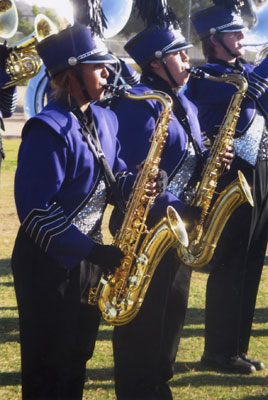All Nonfiction
- Bullying
- Books
- Academic
- Author Interviews
- Celebrity interviews
- College Articles
- College Essays
- Educator of the Year
- Heroes
- Interviews
- Memoir
- Personal Experience
- Sports
- Travel & Culture
All Opinions
- Bullying
- Current Events / Politics
- Discrimination
- Drugs / Alcohol / Smoking
- Entertainment / Celebrities
- Environment
- Love / Relationships
- Movies / Music / TV
- Pop Culture / Trends
- School / College
- Social Issues / Civics
- Spirituality / Religion
- Sports / Hobbies
All Hot Topics
- Bullying
- Community Service
- Environment
- Health
- Letters to the Editor
- Pride & Prejudice
- What Matters
- Back
Summer Guide
- Program Links
- Program Reviews
- Back
College Guide
- College Links
- College Reviews
- College Essays
- College Articles
- Back
Is Marching Band a Sport? MAG
Heart racing. Stadium lights flashing. Crowd roaring with excitement. “Ladies and Gentlemen: IT’S SHOW TIME!” Members of the marching band, bodies pumping with adrenaline, pour out of the tunnel and run onto the football field, ready to hype the crowd with a pregame show. That’s all it is to most – a show. They rarely stop to consider the hours of practice needed to create it. They fail to notice that we work just as hard as other athletes.
“Marching band? That’s lame. Band kids just walk around on the field with instruments. It’s not that hard.”
Members of a marching band often hear these claims from classmates, movies, and even professional sports announcers. People can’t seem to let go of the outdated stereotype that marching band members are socially awkward dorks. It’s bad enough hearing these accusations, but even worse when band kids dare to stand up and defend the activity. They immediately get shut down. “Marching band is not a sport!” And perhaps it’s not. The definition of sport is so relative that it’s difficult to prove whether any activity is a sport unless it already falls under that broad category by mere tradition. “Is it athletic?” is a better question.
A dictionary definition for athletic is “involving the use of physical skills or capabilities, such as strength, agility, or stamina.” Football is easy enough to fit into this definition. Football players spend hours running across the field, dodging other players, and taking down men twice their size. Anyone who watches football can automatically see how physically active and strong players must be to accomplish these feats. But how does that definition apply to marching band?
The athletic activity is marching. There are many styles of marching: the typical roll step, where we roll our feet from heel to toe; the backward march, where we glide across the ground using only the balls of our feet; the slide, where our feet change directions but our head and torso stay facing forward; the jazz run, by which we travel a long distance quickly; the chair step, where we lift our knee to a ninety-degree angle; and the high step, where each foot is lifted parallel with the opposite knee. Each of these marching styles must be done to the beat of the music we’re playing.
Strength, agility, and stamina: we’ve got all three. A sousaphone, the big, shiny instrument that you wear on your shoulder, weighs 50 pounds. Tenors, the giant set of drums that percussionists strap to their bodies, weigh 55 pounds. Although not all instruments are heavy (a piccolo is only 4.2 ounces), the ability to hold the instrument in the proper position for the length of the show demonstrates strength.
As for agility, most marching band shows include visuals. These require versatility of motion, such as dancing, running, or moving the instrument in a specific way. And that’s not even taking the color guard into account, whose job it is to dance, spin, and toss props in time with the music.
And then, of course, there’s stamina. A typical marching band show is 12 minutes. That may not sound long, but we have to work to build up our stamina for the season. Our season starts, as many other activities do, with camp. We spend at least a week, often longer, doing full-day rehearsals. Game days typically start with a morning rehearsal before school. Then, we sit through a full day of classes and attend another rehearsal or after-school pep rally before we suit up and head to the stadium. A typical game day for a marching band runs from 7 a.m. to midnight. It is our job to keep the energy high at all times and always present our best. That’s stamina!
Marching band members get up early and stay up late. We spend hours every day perfecting our performances. We work out. We give up our weekends and our sleep. We cheer on our football team on Friday nights and then get up early on Saturdays for band competitions. An athlete can be anyone who puts forth the energy and will to do something physically demanding. If you break down the activities of a marching band, you see that we do many of the same things that athletes in other sports do, just a little differently. Most people who join a marching band don’t do it expecting recognition and applause. We show up and work hard to do what we love, even if we don’t always receive the recognition we deserve.

Similar Articles
JOIN THE DISCUSSION
This article has 0 comments.

I have been a member of a marching band for 7 years, and I have been involved in countless arguments about the classification of marching band and whether or not marching band members should be considered athletes. I hope that by reading this article, people will develop a better understanding of the work that goes into being in a marching band.